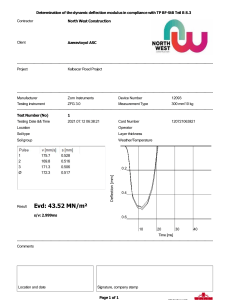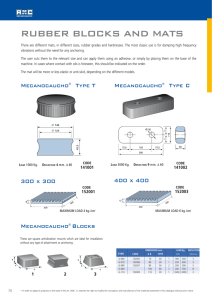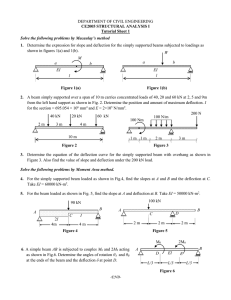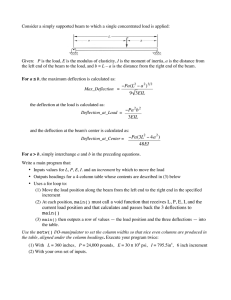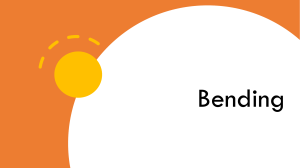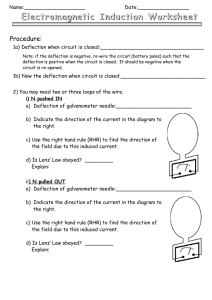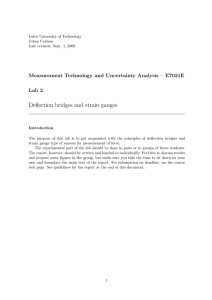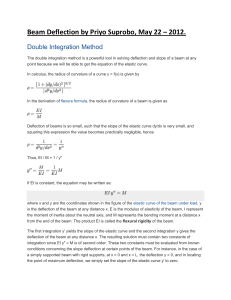'For tomorrow'
advertisement
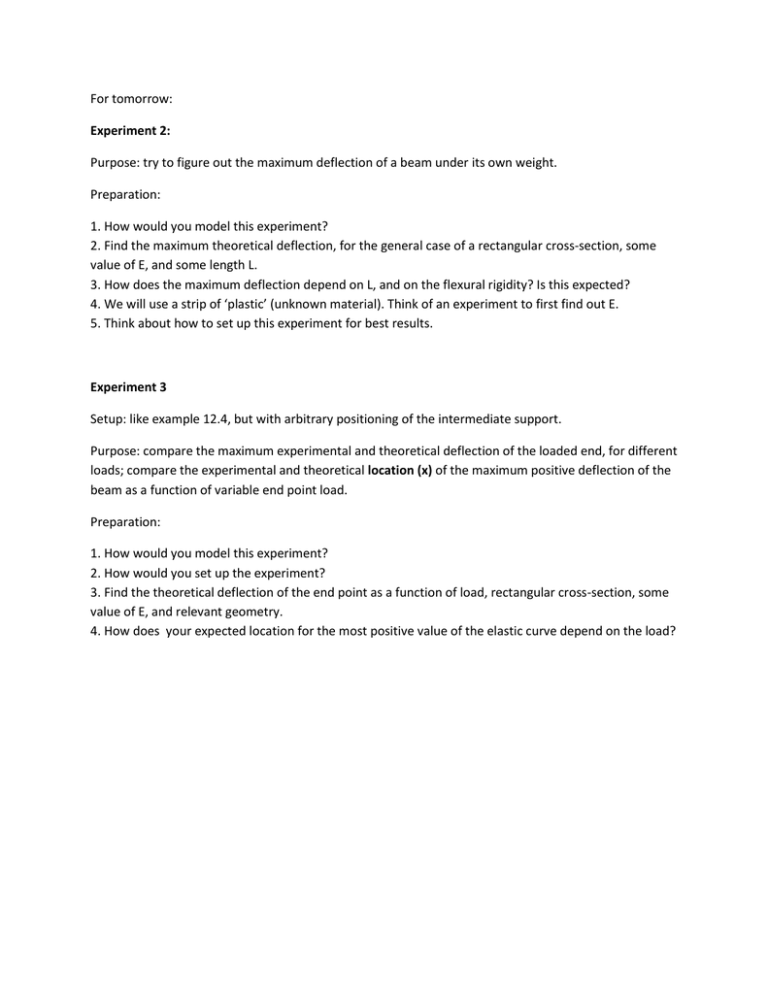
For tomorrow: Experiment 2: Purpose: try to figure out the maximum deflection of a beam under its own weight. Preparation: 1. How would you model this experiment? 2. Find the maximum theoretical deflection, for the general case of a rectangular cross-section, some value of E, and some length L. 3. How does the maximum deflection depend on L, and on the flexural rigidity? Is this expected? 4. We will use a strip of ‘plastic’ (unknown material). Think of an experiment to first find out E. 5. Think about how to set up this experiment for best results. Experiment 3 Setup: like example 12.4, but with arbitrary positioning of the intermediate support. Purpose: compare the maximum experimental and theoretical deflection of the loaded end, for different loads; compare the experimental and theoretical location (x) of the maximum positive deflection of the beam as a function of variable end point load. Preparation: 1. How would you model this experiment? 2. How would you set up the experiment? 3. Find the theoretical deflection of the end point as a function of load, rectangular cross-section, some value of E, and relevant geometry. 4. How does your expected location for the most positive value of the elastic curve depend on the load?
